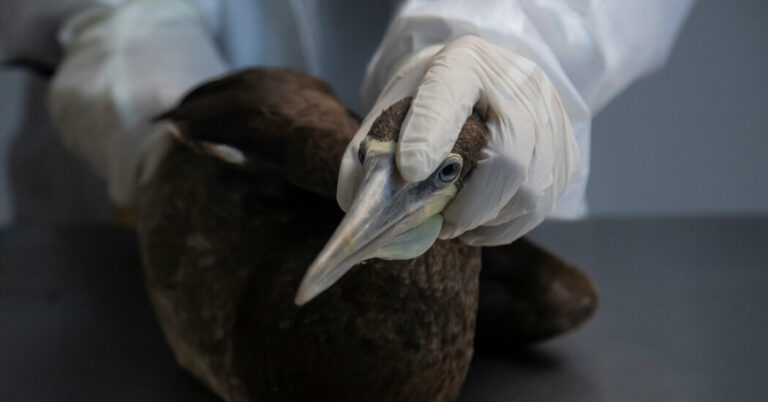Global Concerns as H5N1 Avian Influenza Reaches Antarctica’s Doorstep
In the span of three years, a dangerous strain of avian influenza, known as H5N1, has swept across continents, wreaking havoc among bird populations in Europe, Africa, and Asia. This viral outbreak then crossed the ocean and triggered the most severe bird flu epidemic in United States history.
Last year, the virus reached South America, racing along the Pacific coast, causing significant fatalities among wild birds and marine mammals. A recent report by OFFLU, a network of global flu experts, reveals that Peru and Chile witnessed over 500,000 dead seabirds and 25,000 dead sea lions due to the virus’s impact.
Concerns have now arisen about the virus reaching Antarctica, which, along with Australia, remains one of the only two continents untouched by this pathogen. The report underlines potential catastrophic consequences for Antarctic wildlife, surpassing even the devastation witnessed in South America.
Antarctica is home to more than 100 million breeding birds and numerous marine mammals. Some species, such as emperor penguins and Antarctic fur seals, gather in massive colonies. This could lead to a disastrous scenario, warns Dr. Ralph Vanstreels, a researcher at the University of California, Davis.
This particular bird flu variant emerged in 2020, causing massive outbreaks on poultry farms and leading to the deaths of almost 60 million farmed birds in the United States alone. Unlike previous strains, it spread widely among wild birds and even affected wild mammals.
The virus made its debut in South America in October 2022, quickly spreading from Colombia to Chile within a mere three months. Dr. Marcela Uhart from U.C. Davis noted its rapid progression southward.
Estimating the casualties is challenging, as many infected animals likely went undetected, and not all deceased animals were tested for the virus. However, hundreds of thousands of seabirds, including boobies, cormorants, and gulls, were reported dead. The losses amounted to 36 percent of Peru’s Peruvian pelican population and 13 percent of Chile’s Humboldt penguins.
South American sea lions also suffered losses, with thousands of deaths representing 9 percent of the populations in Peru and Chile. The exact transmission mechanisms among marine mammals remain uncertain.
The virus’s southward movement persisted, and in June, it was detected in a South American sea lion just 670 miles away from the Antarctic Peninsula. Birds that migrate between South America and Antarctica could potentially carry the virus as they move. Spring’s arrival in the Southern Hemisphere might also bring the virus to Antarctic breeding sites.
Antarctica has never faced a highly pathogenic bird flu outbreak before, leaving its inhabitants vulnerable due to limited immune defenses. Dr. Thijs Kuiken, an author of the report, emphasized the potential impact on mortality rates.
Several bird species, like emperor penguins and sooty shearwaters, already confront threats from climate change, human activities, and the fishing industry. Some species are confined to a few islands, making them particularly susceptible to outbreaks.
Marine mammals in the region, including the Antarctic fur seal, are also at risk. With 95 percent of the fur seal population residing around a single island, the threat of an outbreak is significant.
Given the virus’s widespread presence, halting its progression towards Antarctica seems unlikely. Dr. Kuiken acknowledges the current inability to prevent its advance, stressing the importance of remaining vigilant in the coming months.
Close monitoring of wild populations is vital to understand how the virus spreads and which species are most vulnerable. Scientists aim to document these patterns comprehensively to guide conservation efforts and protect species from further harm, as articulated by Dr. Uhart.

